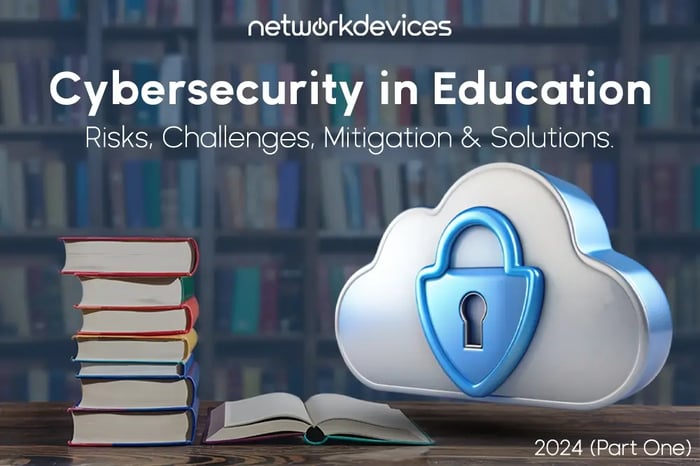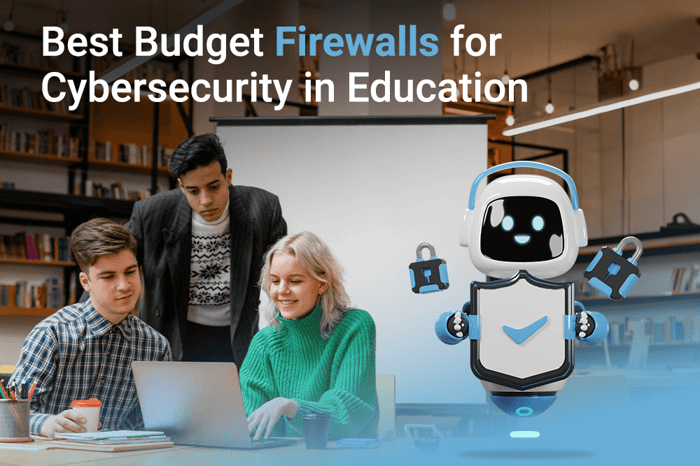You have no items in your shopping cart.

Secure & Digital IT Infrastructure for Educational Institutions
This article highlights the urgency for educational institutions to modernize their digital IT infrastructure to ensure efficient operations. With a secure infrastructure, colleges can facilitate remote learning and enhance global accessibility.
What is Digital IT infrastructure?
Digital IT infrastructure refers to the foundational technology components and systems that support and enable digital operations within an organization, such as educational institutions. As educational institutions embrace the future, the role of digital infrastructure becomes increasingly paramount, ensuring seamless and efficient operations.
It includes hardware, software, networks, and data storage systems that facilitate the flow of information, communication, and digital services. In simpler terms, the digital infrastructure backbone allows institutions to use computers, the internet, and digital tools to carry out their educational and administrative activities efficiently and securely.
This empowers educational institutions like schools, colleges, universities, and coaching centers to run their classes and syllabus online and remotely so location and travel restrictions cannot hamper student learning.

Why Should Educational Institutions Transform to Digital Infra?
Many colleges and universities have been transforming their digital infrastructure to embrace emerging technologies, mainly due to factors like the pandemic and the increasing popularity
This transformation involves adopting digital tools and robust digital infrastructure enhancements like robust internet connectivity to support remote learning, enhance administrative efficiency, provide students with a more flexible and accessible education experience, and stay competitive in an evolving educational landscape.
Additionally, this shift allows institutions to leverage data analytics for better decision-making and reach a global audience, offering courses and programs to students worldwide.
How Colleges and Universities Can Benefit by Providing Flexible E-learning Platforms?
Offering flexible e-learning options can attract a broader range of students, including those who cannot attend traditional in-person classes due to geographical constraints, work commitments, or other reasons. This can lead to higher enrollment numbers and increased revenue for the institution.
E-learning platforms enable colleges and universities to reach a global audience. They can offer courses and programs to students from different parts of the world, tapping into international markets and diversifying their student body.

Thanks to enhanced digital infrastructure, E-learning can reduce the need for physical infrastructure and resources, such as classroom space and printed materials. This can result in cost savings for institutions, especially in the long term.
How Zoom, Teams, and Webex Enhance Virtual Classrooms
Collaboration applications like Zoom, Microsoft Teams, and Cisco Webex are invaluable tools for conducting webinars and online classes for colleges and universities, especially when supported by a solid digital infrastructure.
Here are some points to highlight their advantages:
1. Video Conferencing:
These platforms offer high-quality video conferencing capabilities, relying on robust digital infrastructure, allowing instructors to conduct live video sessions with students.
2. Screen Sharing:
Instructors can share their screens to display presentations, documents, or demonstrations, making it easy to deliver lectures or showcase course materials
3. Interactive Tools:
These platforms provide interactive features like chat, polls, and Q&A sessions, fostering student engagement and allowing for real-time feedback and discussion.
4. Recording and Playback:
Webinars and classes can be recorded, enabling students to review the material later or catch up if they miss a session. This is especially helpful for asynchronous learning.

5. Integration:
These platforms often integrate with learning management systems (LMS) and other educational tools, a seamless process made possible by a solid digital infrastructure, streamlining administrative tasks like scheduling and grade tracking. To remain at the forefront of educational excellence, colleges and universities must not only adopt the latest teaching methodologies but also invest in robust digital infrastructure.
6. Security Features:
They offer security features like password protection, waiting rooms, and end-to-end encryption to ensure the privacy and safety of participants.
7. Customization:
Instructors can customize the settings to fit their specific teaching style and preferences, tailoring the online learning experience to their needs.
8. Technical Support:
They often provide technical support and resources for users. A robust digital infrastructure ensures that both instructors and students can troubleshoot issues and navigate the platform effectively.

The Cost Factor: How Costly Is it to Adapt and Implement a Secure Digital IT Eco-System?
Adapting and implementing a secure digital IT ecosystem for educational institutions involves a range of cost considerations, including strengthening the digital infrastructure. It encompasses investments in hardware, software, infrastructure setup, and security measures, with expenses varying widely depending on institution size and specific requirements.
Ongoing costs include staffing, training, software development, maintaining and upgrading the digital infrastructure, data storage, compliance measures, upgrades, maintenance, and emergency preparedness.
Additionally, consulting services and ensuring accessibility for all students require additional budget allocation. The overall cost is influenced by existing infrastructure, regulatory compliance needs, and the institution's commitment to cybersecurity.
Careful planning and budgeting are essential to balance security and affordability while enhancing the institution's digital capabilities. Modern digital infrastructure not only supports advanced e-learning platforms but also ensures that students and faculty can access resources reliably and securely.
Can Digital Transformation Provide Better Business and ROI in the Educational Sector?
Digital infrastructure transformation can provide significant benefits and a favorable return on investment (ROI) in the educational sector. By embracing modern digital technologies and processes, educational institutions can streamline operations, enhance the learning experience, and improve their overall efficiency.
This transformation enables institutions to reach a broader audience, offering flexible learning options that cater to the diverse needs of students.
Additionally, it allows for better data collection and analysis, helping institutions make informed decisions to enhance educational outcomes.
Ultimately, digital transformation not only improves the quality of education but also contributes to cost savings, making it a strategic investment that can yield substantial ROI for educational institutions.

Bridging The Gap Between Traditional Learning and e-Learning
Digital IT transformation, anchored by robust digital infrastructure in educational institutions, plays a pivotal role in bridging the gap between traditional learning and e-learning methodologies and platforms. This transformation involves adopting and integrating digital technologies into the educational environment to create a seamless and effective learning experience that combines the strengths of both traditional and e-learning approaches.
Digital infrastructure allows educational institutions to offer courses in various formats, including synchronous (live classes) and asynchronous (self-paced) options. This flexibility accommodates students with different schedules and preferences.
· Hybrid Learning Models: Digital transformation allows institutions to implement blended learning models, which combine in-person instruction with online components. This approach offers flexibility for students, enabling them to access course materials, engage in discussions, and complete assignments online while still benefiting from face-to-face interactions with instructors and peers.
· Resources Accessibility: Digital IT transformation ensures that educational resources, including textbooks, research materials, and multimedia content, are readily accessible through online platforms. This availability enhances the learning experience by providing students with a wealth of materials that can supplement traditional classroom instruction.
· Interactive Learning: Digital tools and platforms enable interactive learning experiences. Instructors can use multimedia presentations, simulations, and online collaboration tools to engage students actively in the learning process, making classes more dynamic and engaging.

· Personalized Learning: Through data analytics and learning management systems (LMS), institutions can personalize the learning experience for each student. They can track individual progress, identify areas of weakness, and recommend tailored resources or interventions, creating a more adaptive and effective learning journey.
· Global Learning Communities: Digital transformation connects students and educators globally. Through online forums, discussion boards, and virtual classrooms, learners can interact with peers and experts worldwide, enriching their educational experience and knowledge with diverse perspectives.
· Feedback & Assessment: Digital tools facilitate the collection of real-time feedback from students, enabling instructors to assess the effectiveness of their teaching methods and adjust accordingly.
Want exclusive suggestions for digital transformation and how we can help?













